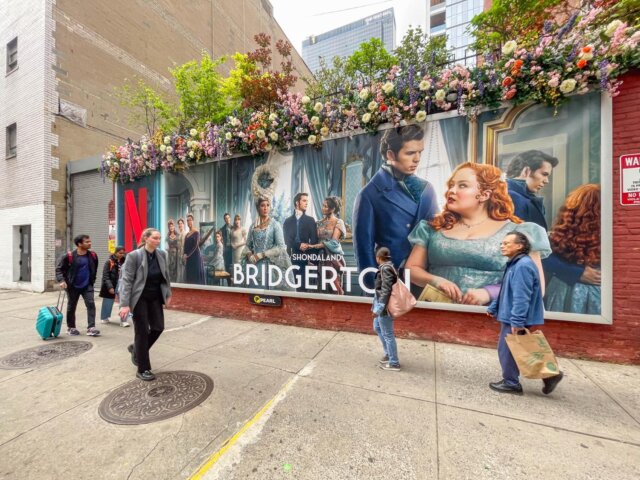Despite widespread use in the marketing world since the 1830s, billboards are far from outdated. In fact, this form of out-of-home (OOH) advertising remains a powerful tool, particularly in brand awareness campaigns. Their strength comes from numerous factors, from utilizing the psychology of visual advertising to integrating well with other marketing and data analytics tools to boost effectiveness.
The Visual Impact of Billboard Ads
Visual advertising is especially effective because people are more likely to remember what they see compared to what they read or hear. A well-designed image on a billboard can capture attention and convey a concept with little or no text involved, especially in a cluttered media landscape.
Billboards aren’t just vying for attention from other signs and visual ads. They also must stand out from their surroundings in different weather and lighting. Plus, their message must be immediately obvious to passersby and passengers in cars driving on the streets. Less is often more in this case. For example, a white font with a vibrant background and a simple image can catch someone’s eye and quickly convey a message.
Building Brand Awareness
Brand awareness is one of the most important factors in your marketing campaign. It makes your brand immediately recognizable and helps bring in a loyal customer base while also driving sales. In tandem with a digital campaign, billboards can improve brand awareness, making a brand seem more reliable than competitors.
Billboards are a phenomenal tool for the task. By implementing your brand’s unique aesthetic, such as using your logo, fonts, or catchphrases, in your billboard design, you build your brand’s presence. Plus, you may even create associations that could spur sales. For example, a fast food restaurant may put up a billboard to make passersby think of their brand.
Targeting Your Audience with Billboard Ads
Geographic targeting (geo-targeting) is a common marketing strategy in which advertisements are placed within a set area where the target audience is most likely to be present. For example, a car rental company may opt to put up billboards near the local airport.
Location data analytics can help determine the optimal placement for a new billboard. This may include reviewing traffic data to determine areas where people frequently pass. Analyzing demographics in an area can provide insight into whether a target audience is present in a certain area. By finding where your brand’s target demographics frequently go through this data, you can often optimize the placement of billboard advertising to boost efficiency.
Measuring the Impact
Traditionally, a billboard’s effectiveness is measured by analyzing any changes to sales, website traffic, or brand awareness after you’ve installed it. However, digital billboards allow extra information to be gathered. Some billboards may be equipped with GPS technology that can accurately track mobile devices passing by, providing an estimate of visibility based on the number and demographics of people passing by.
Some digital billboards may also include Bluetooth beacons for targeted marketing or QR codes and Near Field Communication (NFC) tags. These allow a degree of interactivity that can bring potential customers to an app or landing page. That data can also be tracked to determine how a billboard is performing.
Billboard data can then be integrated with other marketing metrics such as determining how many people likely saw or interacted with your ad or how many new sales you’ve had as a result of your ad.
Billboard Ads in an Integrated Marketing Campaign
Billboards make an effective part of an integrated marketing campaign and can potentially even spread into other avenues. For example, a billboard that encourages selfies or posts on social media can further expand your brand’s reach. Integrating a billboard with geotargeting can push digital advertisements toward those who pass it. Incorporating QR codes that link to digital or social media campaigns can boost interactions.
Take McDonald’s as an example. The fast-food giant utilized a unique OOH ad that spilled beyond the billboard and extended to cover the brick wall behind it in the UK to advertise a meal deal. In addition, McDonald’s integrates extensive digital marketing and social media campaigns to further spread brand awareness, sometimes even taking playful shots at competitors to attract more attention.
The Future of Billboard Advertising
In short, billboard ads and other common OOH advertising methods aren’t likely to be replaced soon. However, they are growing more advanced. Emerging trends encourage the increasing use of digital and interactive billboards. Integrating augmented reality with billboards allows people to scan QR codes and obtain unique coupons or deals. As technology continues to advance, the opportunities for billboards and other OOH ads grow. In fact, as smart cities continue to develop, it’s likely that digital billboards in particular will become integral for marketing campaigns.
Explore the Potential of Billboard Ads with Pearl Media
If your business needs a boost of brand recognition, a billboard could be the missing piece to your marketing campaign. By getting your brand name and imagery out in front of hundreds or thousands of people daily, you foster recognition and therefore trust in your brand.
Contact Pearl Media today to discover the potential brand awareness billboard advertising can provide your brand.
